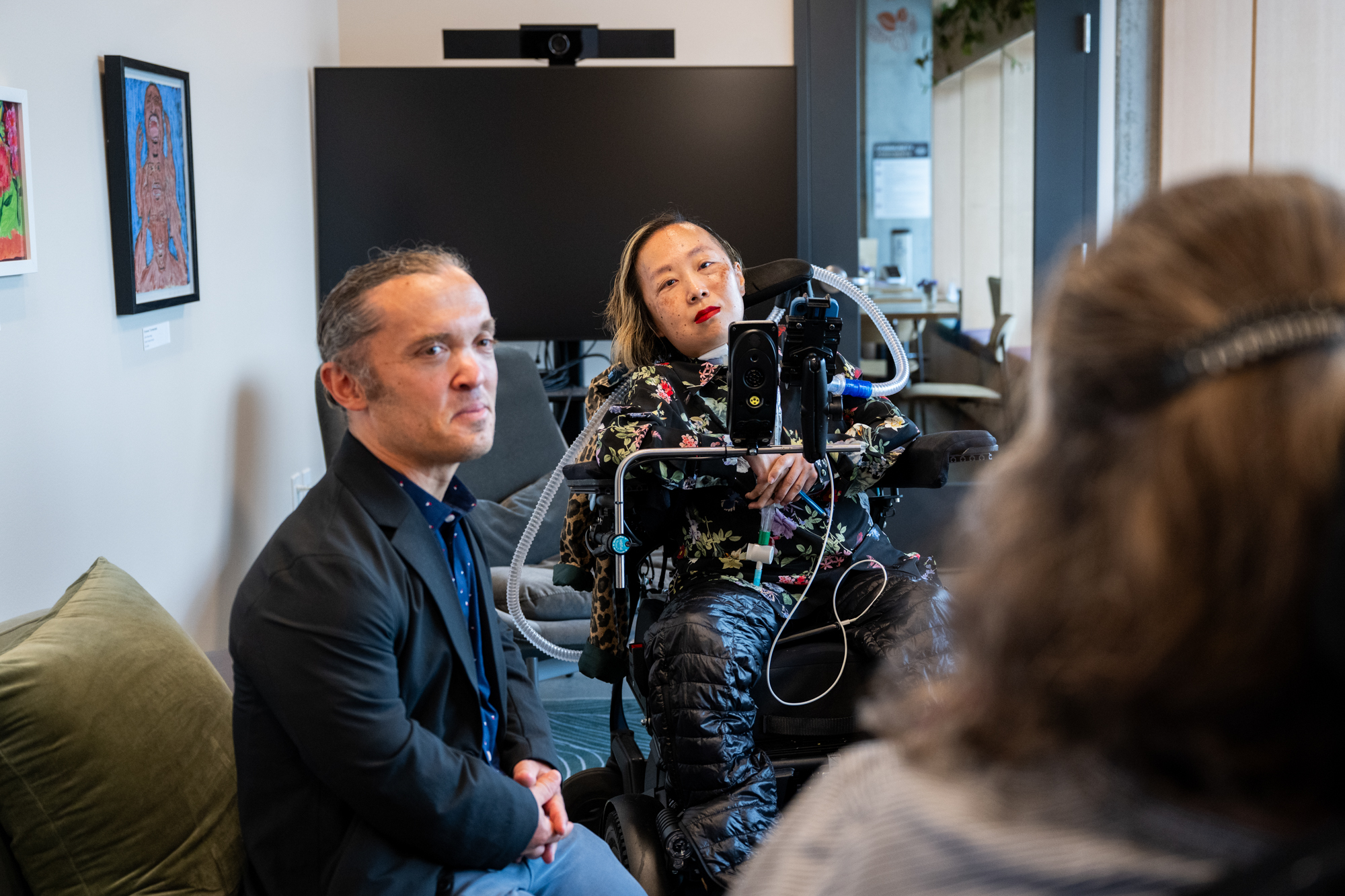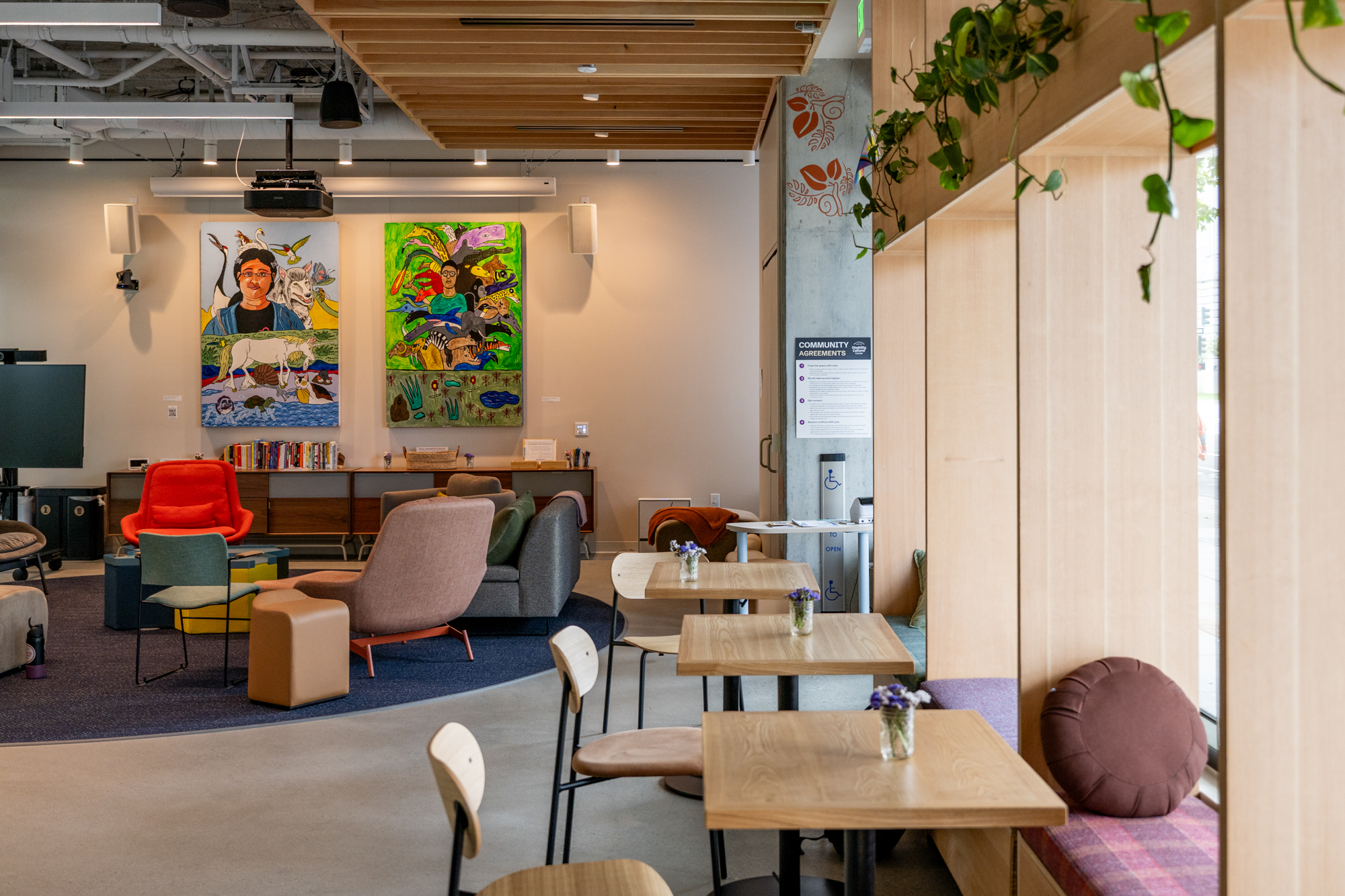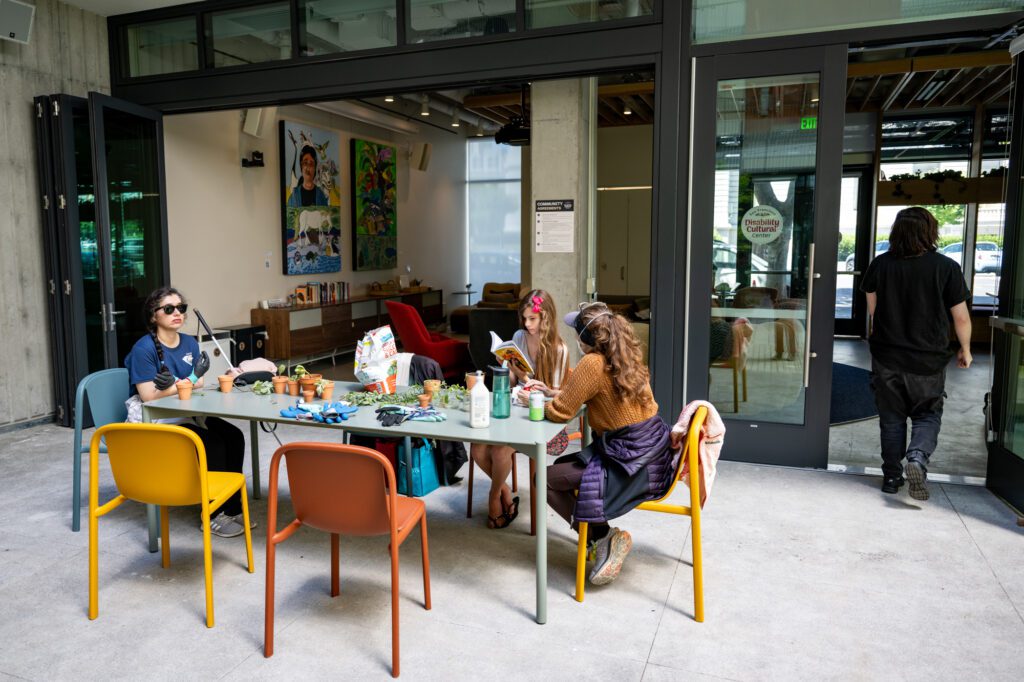But the work of making public spaces more accessible is far from over. One frustrating example Kaplan has on her mind is a central elevator at Hallidie Plaza, next to the Powell Street BART station, that has not worked in more than 20 years.
For residents like Alice Wong, a disabled writer and activist, the broken elevator is both a symbol of ongoing struggle and a literal barrier to moving through her own neighborhood.
“If the Hallidie Plaza elevator was working, it would be the one closest to my home, but instead I have to go an entire block, which is pretty long, to the one on 4th Street,” said Wong, who lives in the South of Market neighborhood. “I look forward to an accessible Hallidie Plaza entry.”
Wong moved to San Francisco in 1997 to attend graduate school at UCSF. She was familiar with the city’s history of disability activism and chose the city in part because she wanted to meet more wheelchair users like herself, who understand their disability as a part of their political identity.
Despite moving to the city seven years after the ADA passed, Wong found many barriers to getting around her new campus and city.

“None of their student housing was accessible, so they had to renovate the basement of a faculty house so I could live there,” Wong said. “Changes by major institutions were very gradual.”
At the Disability Cultural Center, accessibility was not an afterthought tacked on to comply with regulations, but rather part of the facility’s design from the start.
“The Disability Cultural Center offers a place for us, by us, that isn’t a service or medical provider,” said Wong, who leads the Disability Visibility Project. “It shouldn’t be radical, but it is — to have a space centered on disability culture where it celebrates who we are that’s not centered on any one diagnosis or on fixing us.”

Including beautiful, accessible housing was another central part of the design to meet the needs of the disabled community.
The center is housed on the ground floor of The Kelsey Civic Center, a 112-unit mixed-income housing development where 25% of units are reserved for people with disabilities.
“Many homes have a flight of stairs up to the entrance, such as the charming Victorians San Francisco is famous for. And a lot of apartment buildings that aren’t high-rises don’t have elevators. That makes it difficult to age in place,” Wong said. “Livability and affordability should be part of the same goal when it comes to new housing in San Francisco.”
The center has attracted visitors like San Francisco resident Sophie Mai. She heard about it while visiting a wellness clinic in the city, and dropped in on a recent Friday afternoon to check it out.
“Representation is important, also for invisible disabilities, and this is a beautiful space,” Mai said while sitting on one of the lounge chairs in the center’s living room. “I’m looking forward to spending more time here.”
Today’s political climate and cuts to Medi-Cal, food stamps and other social safety net programs makes the need for community even greater, according to Wong.

